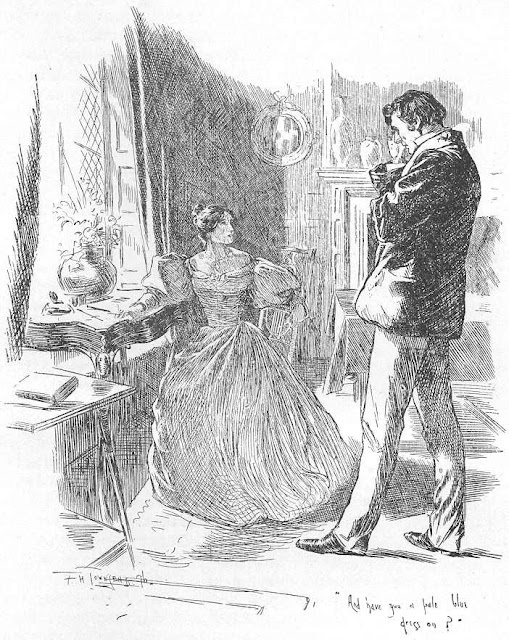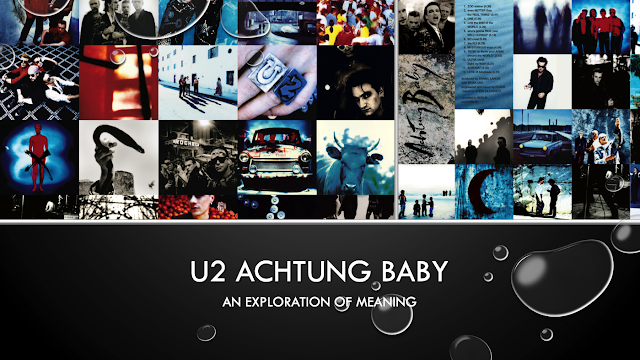Reading Journal #1 (ENG 436)
 |
| "And have you a pale blue dress on?" (1847 edition of Jane Eyre by F. H. Townsend, 1868-1920 [Public domain] |
I think Jane Eyre was an immersive, satisfying read. I have little background in Victorian works and have not read any of the Brontë sisters’ work previously. I also haven’t seen any of the film adaptations of the story. I enjoyed Brontë’s representation of Jane from the start. Her character, defined by a fierce independence and desire to be free of artificial constraints while still conforming (mostly) to societal norms, was someone that was easy to root for and unpredictable enough to keep me reading out of curiosity for what was on the next page.
I thought the narrator told the story very well and that the pacing and description was well executed. There were sections of incredibly detailed settings and events and other sections in which the author applied a swift “fast forward” in order to keep the story moving along. I didn’t quite expect this and thought I might have to plod through Jane’s entire adolescence year by year over many chapters.
The setting of the story and the various locations in which events occurred were also interesting to me. I thought it was witty that the Thornfield manor, in which a long-standing conflict was underway and under the roof of which Rochester housed what was effectively a prisoner, was topped with battlements – reminiscent of either a fortress or a prison or both. I found it interesting that young Jane turned down the idea of finding family members that might be poor and ended up living in very poor conditions at Lowood. Lowood was poverty institutionalized with training to remain poor all your life as its focus per Brocklehurst’s tirade about cutting hair and simplicity in ways and attire.
Each of the characters featured in Jane Eyre was well developed. The servants in many cases were mere outlines of people, but Bronte still managed to describe them enough and to give them enough dialogue that the reader had a general impression of who they were, and I found them easy enough to imagine as whole people rather than simple references. The main and supporting cast members were well developed and well described. I liked how Brontë approached this. Typically, the initial appearance of a character was accompanied by a very detailed description of the characters build, features, expressions, clothing, and mannerisms. After the initial appearance, when a supporting cast member appeared, there was little additional description and somehow the combination served to give me a good impression of what that character was about – or at least, what the author wanted me to know about that character.
The main male characters, especially St. John and Mr. Rochester, were incredibly well developed. The narrator gave us strong insight and description of both and provided enough environmental exposition and conflicts with outside players (Rosamond, Mason, Ingram, etc.) that the reader had a good, satisfying grip on what they were about from Jane’s point of view.
My favorite character in the novel was Helen Burns. I liked the character because of her clarity despite her age—doubtlessly brought on by the knowledge she was dying—and her manner. The humility with which Helen dealt with her daily tribulations and the wisdom with which she gave advice was beautifully written. I thought Helen Burns as formative friend and companion and tragic loss to a young Jane was effective, strong, and beautiful from a human standpoint.
I’m not surprised this novel and Jane’s story has managed to remain interesting for so many years. The themes and characters are still relatable today even though times have changed significantly. Brontë managed to craft a story with characters and conflicts that at their core still describe issues and feelings that people struggle with today.
Works Cited
Brontë, Charlotte. Jane Eyre: Case Studies in Contemporary Criticism, 2nd ed; Edited by Beth Newman; Bedford/St. Martin’s Press, 2014.

